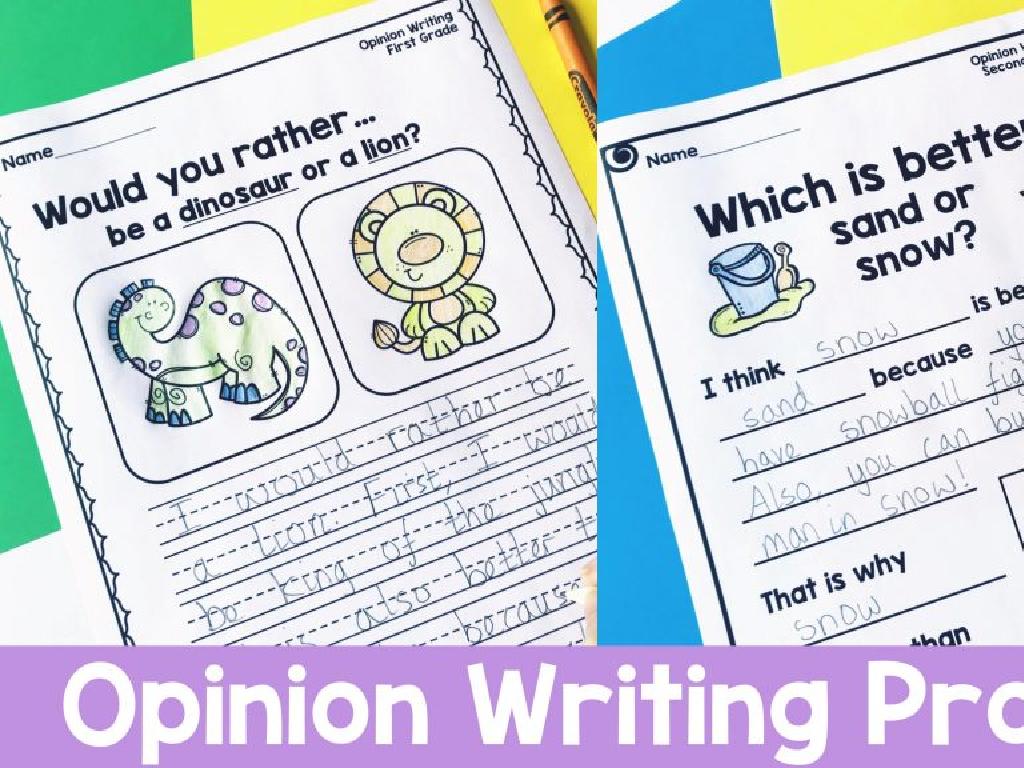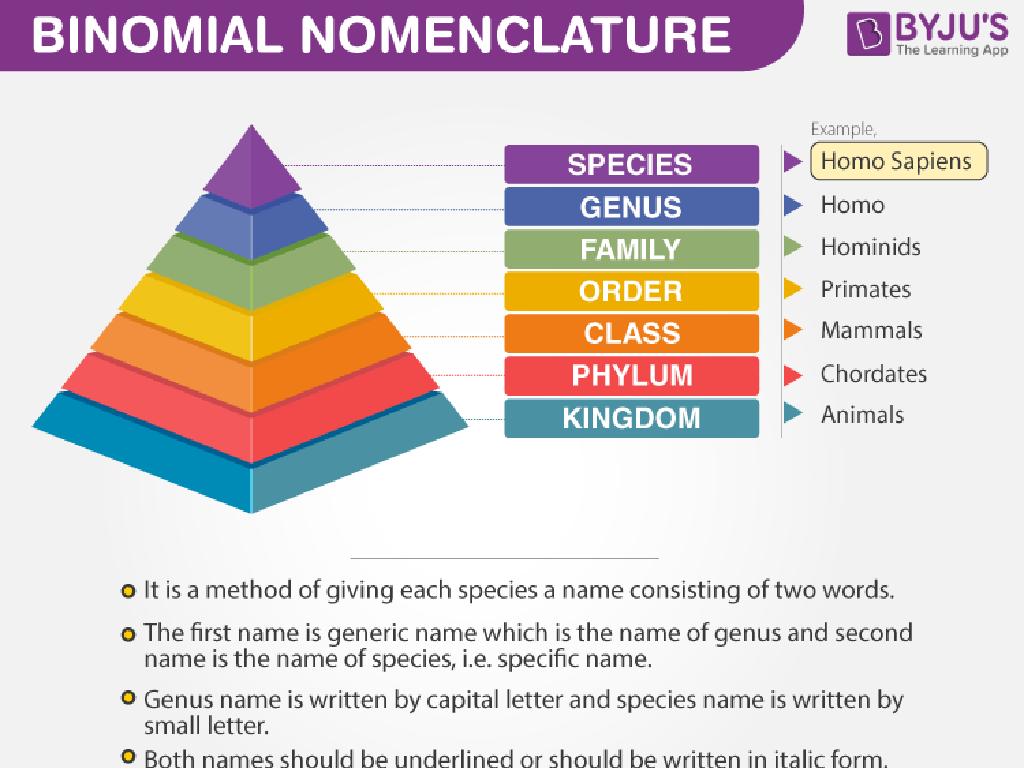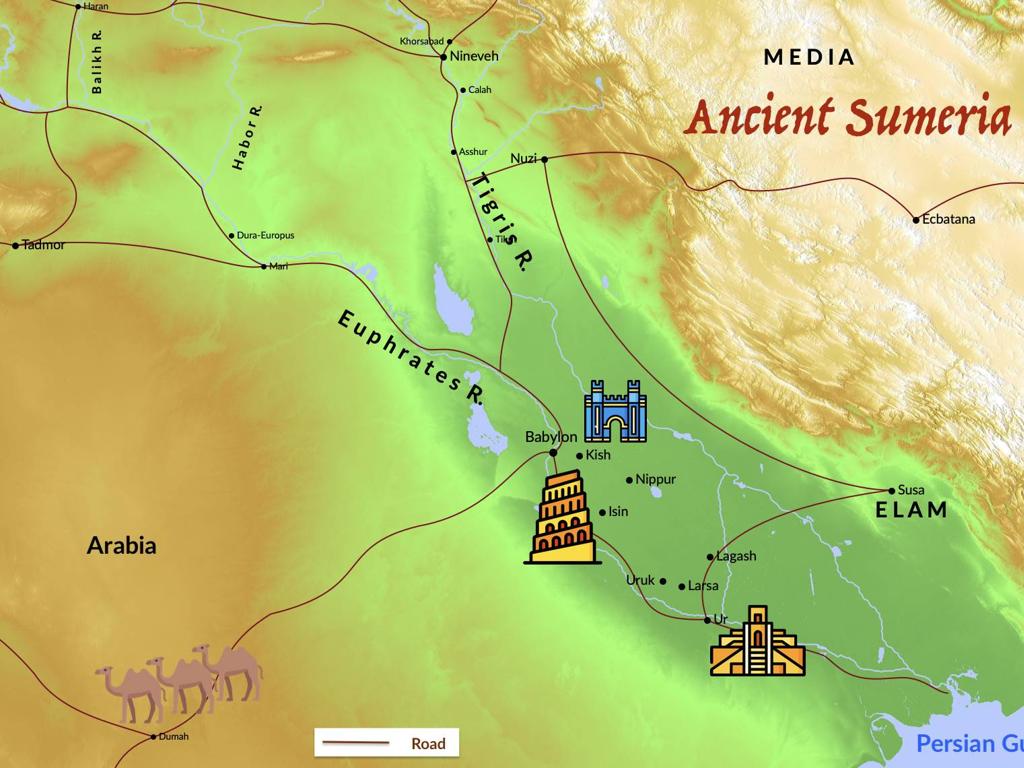Estimate Sums: Word Problems
Subject: Math
Grade: Fourth grade
Topic: Addition
Please LOG IN to download the presentation. Access is available to registered users only.
View More Content
Introduction to Estimation
– What is estimation?
– Estimation is finding a number close to the exact amount.
– Benefits of estimating
– Estimating saves time and helps check answers.
– ‘About the same’ concept
– Means nearly equal, not exactly the same.
– Estimation in daily life
– Use estimation to quickly guess quantities or sums.
|
This slide introduces the concept of estimation, which is a fundamental skill in mathematics and daily life. Estimation involves finding a number that is close enough to the exact amount, making calculations quicker and easier. It’s particularly useful when an exact number isn’t necessary, or when you want to check the reasonableness of an answer. The term ‘about the same’ is a way to express that two amounts are nearly equal, though not precisely. Encourage students to think of times they have used estimation outside of school, such as guessing the number of candies in a jar or the total cost of groceries. This real-world connection will help solidify the concept and its utility.
Estimating Sums in Addition
– Learn to estimate sums
– Round numbers to nearest ten
– If a number is 35, we round it to 40.
– Add rounded numbers together
– After rounding, add those numbers for an estimate.
– Understand estimated sums
– This gives a quick idea of the sum without exact calculation.
|
This slide introduces the concept of estimation in addition, which is a valuable skill for making quick and reasonable calculations without needing the precise total. Start by explaining that estimating sums involves rounding numbers to the nearest ten and then adding those rounded numbers together. Provide examples of rounding numbers, such as rounding 35 to 40 because it is closer to 40 than to 30. After rounding, demonstrate how to add the rounded numbers to find an estimated sum. Emphasize that the goal is to get a general idea of the sum, which can be particularly useful in everyday situations where an exact total isn’t necessary. Encourage students to practice with various numbers to become comfortable with the process of rounding and estimating.
Estimation in Daily Life
– Estimate at the grocery store
– Round prices to nearest dollar to guess total cost
– Estimate time for chores
– Round chore times to nearest half-hour for total time
– Estimation in daily decisions
– Use estimation to make quick, practical choices
|
This slide aims to show students how estimation is a practical skill used in everyday situations. At the grocery store, we can round the price of items to the nearest dollar to quickly estimate the total cost before checking out. When planning our day, we can estimate how long chores might take by rounding to the nearest half-hour to manage our time effectively. Estimation also helps us make quick decisions without needing exact numbers, such as deciding if we have enough money for a purchase or enough time to play before dinner. Encourage students to think of times they or their family members use estimation in daily life and to share their examples in class.
Estimation in Word Problems
– Read the problem carefully
– Understand the story and what’s being asked
– Identify numbers to estimate
– Find the numbers that you need to work with
– Solve using estimation
– Add or subtract rounded numbers to estimate
– Check reasonableness of answer
– Does your estimate make sense in the story?
|
This slide is aimed at teaching students the process of estimating sums within word problems. Start by emphasizing the importance of reading the problem thoroughly to understand the context and what is being asked. Next, guide students to identify the key numbers in the problem that they will need to estimate. Teach them how to round these numbers to the nearest ten or hundred to make the math easier. After solving the problem with these estimated numbers, encourage students to check if their answer is reasonable within the context of the problem. Provide examples of word problems and work through them together, discussing why estimation is a useful tool and how it can be applied in real-life situations.
Estimation in Addition: Practice Problems
– Let’s solve estimation problems
– Discuss our problem-solving strategies
– Round numbers before adding to simplify
– Work through problems together
– We’ll add rounded numbers as a group
– Share our answers and methods
– Explain your strategy and compare with others
|
This slide is designed to engage the class in a collaborative problem-solving activity focused on estimating sums in word problems. Begin by introducing the concept of estimation and its usefulness in quickly solving addition problems. Encourage students to share their strategies for rounding numbers and estimating results. As a class, work through several problems, guiding students to apply their estimation strategies. After solving, have students share their answers and the methods they used to arrive at them. This will help them understand different approaches and reinforce the concept of estimation. Provide feedback and clarify any misconceptions. Prepare at least 4-5 different word problems with varying levels of complexity to accommodate different learning paces.
Group Activity: Estimating Sums
– Break into small groups
– Receive a set of word problems
– Estimate sums of the problems
– Round numbers to nearest ten, then add
– Explain your estimation reasoning
– Share how you decided on the estimate
|
This slide introduces a group activity focused on estimating sums in word problems. Divide the class into small groups, ensuring a mix of abilities in each group to promote peer learning. Provide each group with a unique set of word problems tailored to their skill levels. The objective is for students to practice rounding numbers to the nearest ten and then adding to estimate the sum. After solving, each group will explain the logic behind their estimations, reinforcing their understanding of the concept. As a teacher, circulate the room to offer guidance and ensure that each group is on track. Possible activities could include real-life scenarios such as shopping budgets, distances traveled, or time spent on tasks. Encourage students to discuss their strategies and reasoning with their group members.
Review and Reflect: Estimation Skills
– Recap on estimation methods
– Importance of estimation
Estimation helps us quickly solve problems without exact calculations.
– Share your thoughts
What did you find most interesting about learning to estimate sums?
– Discuss challenges faced
Were there any word problems that you found tricky or hard to estimate?
|
This slide aims to consolidate the students’ learning about estimation in addition. Begin by reviewing the different methods of estimation discussed in the lesson, such as rounding numbers to the nearest ten or hundred before adding. Emphasize the importance of estimation as a valuable skill in everyday life, for example, when quickly calculating the total cost of groceries or time needed for tasks. Encourage students to share their personal experiences from the lesson, including any aspects of estimation they found particularly interesting or any challenges they encountered with the word problems. This reflection will help them internalize the concept and recognize areas where they may need further practice.
Class Activity: Estimation Jar
– Guess total items in the jar
– Write your estimates
– Count and compare results
– Discuss estimation strategies
– Share how you estimated: Did you group items? Use rounding?
|
This activity is designed to help students practice estimation in a fun and interactive way. Place a clear jar filled with small items (like beans, marbles, or pencils) in front of the class. Each student will make a visual estimate of the total number of items and write it down on a piece of paper. After everyone has made their guesses, count the items as a class to see how close the estimates were to the actual number. Discuss the different strategies students used to make their estimates. Did they group items in tens or hundreds? Did they use rounding? This will help them understand different techniques for estimating sums and apply these strategies to word problems. Prepare different jars to ensure a variety of items and quantities, which will allow for multiple rounds of guessing and discussion.






